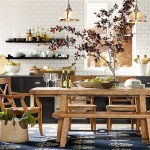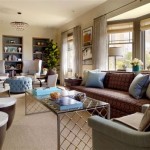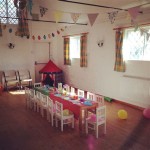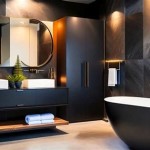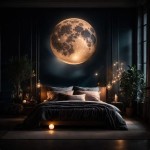Loft Area Decor: Maximizing Space and Style
Loft apartments, with their high ceilings, open floor plans, and industrial charm, present unique decorating opportunities. Successfully decorating a loft area involves careful planning and consideration of the space's architectural features, desired functionality, and overall aesthetic goals. This article explores key strategies and ideas for maximizing both space and style in a loft environment.
One of the primary challenges in loft decorating is defining distinct zones within the open layout. While the open concept contributes to a sense of spaciousness, it can also make it difficult to delineate areas for different activities such as living, dining, and sleeping. Strategic use of furniture placement can help achieve this separation. For instance, a large sectional sofa can visually divide a living area from a dining space, while a strategically placed bookcase can create a sense of privacy for a sleeping nook.
Rugs are another valuable tool for defining zones in a loft. A large rug in the living area anchors the furniture and establishes a distinct space separate from the kitchen or dining area. Different textures and patterns can further enhance this separation and add visual interest. Layering rugs can also create a cozy, inviting atmosphere within a larger open space.
Lighting plays a crucial role in setting the mood and highlighting specific areas in a loft. Pendant lights hung over a kitchen island or dining table not only provide functional illumination but also visually define those areas. Track lighting can be used to highlight artwork or architectural features, while strategically placed floor lamps can create warm, inviting pools of light in seating areas. Consider installing dimmer switches to control the intensity of the lighting and adapt the ambiance to different activities and times of day.
Maximizing vertical space is essential in loft decorating. Tall bookshelves and storage units draw the eye upward and make the most of the high ceilings, providing ample storage without sacrificing valuable floor space. Vertical space can also be utilized by hanging artwork or decorative elements at varying heights, adding visual interest and dimension to the space.
The industrial aesthetic often associated with lofts can be embraced or softened depending on personal preference. Exposed brick walls, ductwork, and concrete floors can be incorporated into the design, adding character and a raw, urban feel. Alternatively, these elements can be softened with textiles, rugs, and warmer color palettes to create a more inviting and comfortable environment.
Choosing the right color palette can significantly impact the overall feel of a loft. Light, neutral colors can enhance the sense of spaciousness and airiness, while darker colors can create a more intimate and cozy atmosphere. Pops of color can be introduced through artwork, textiles, and decorative accessories to add personality and visual interest.
Incorporating greenery is an effective way to bring life and vibrancy into a loft space. Large potted plants can act as natural room dividers, while smaller plants can be placed on shelves, windowsills, and coffee tables to add a touch of nature. Vertical gardens can also be a creative way to utilize wall space and add a unique design element.
Window treatments are an important consideration in loft decorating. Floor-to-ceiling windows, while offering stunning views and ample natural light, can also create privacy concerns. Sheer curtains can provide privacy while still allowing natural light to filter through, while heavier drapes can be used for increased privacy and light control. Blinds are another practical option, offering flexibility in light filtering and privacy.
Furniture selection should be guided by both functionality and aesthetics. Multi-functional furniture pieces, such as ottomans with storage or sofa beds, can be particularly useful in maximizing space in a loft. Choosing furniture that is appropriately scaled to the loft's dimensions is crucial to avoid overwhelming the space. A mix of textures and materials can add depth and visual interest to the overall design.
Accessorizing a loft effectively involves carefully curating items that reflect personal style and enhance the overall aesthetic. Artwork, sculptures, and decorative objects can add personality and create visual focal points. Textiles, such as throw pillows and blankets, can add warmth and texture, while mirrors can be strategically placed to reflect light and create the illusion of more space.
Finally, incorporating personal touches is essential to making a loft feel like home. Displaying cherished photographs, travel souvenirs, and other meaningful items can add character and create a sense of personal history within the space. The goal is to create a space that is both stylish and functional, reflecting the individual's unique personality and lifestyle.

6 Ways To Design Your Loft Space Visionary Homes

6 Ways To Design Your Loft Space Visionary Homes

6 Ways To Design Your Loft Space Visionary Homes

How To Decorate A Loft 12 Stylish Apartment Design Ideas

Loft Decorating Ideas Five Things To Consider

10 Decorating Ideas Spotted In A Model Home Loft Upstairs Small Spaces Decor

Upstairs Loft Decor Design Pops Of Color Home

Pin By Marie Hansler On Decorating Loft Design Decor Upstairs

75 Loft Style Bedroom Ideas You Ll Love December 2025 Houzz
45 Brilliant Loft Bedroom Ideas And Designs Renoguide N Renovation Inspiration
Related Posts
